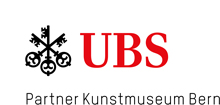Hildebrand Gurlitt & Cornelius Gurlitt
The Cornelius Gurlitt Legacy includes some 1,600 artworks. Little is known about the founder, who lived in seclusion, and one can only speculate on his motives in naming the Kunstmuseum Bern Foundation in his testament as sole beneficiary to his fortune.
CORNELIUS GURLITT (1932 – 2014)
Rolf
Nikolaus Cornelius Gurlitt was born 28 December 1932, to the art historian Hildebrand
Gurlitt (1895 – 1956) and the dancer Helene Gurlitt (née Hanke, 1895 – 1968) in
Hamburg. After his father’s art dealership was seriously damaged by air raids
at the end of 1941, the family moved into a house in Dresden owned by
Hildebrand Gurlitt’s parents. After their house was destroyed during the
bombing of Dresden on 14 February 1945, the family found refuge in Aschbach
(Bavaria). While Hildebrand Gurlitt was placed under house arrest by the Allies
and interrogated several times regarding his activities as an art dealer during
the Third Reich, Cornelius and his sister attended the Odenwald School. The
Gurlitt family moved to Dusseldorf in 1948. After high school, Cornelius
Gurlitt began studying art history, music history, and philosophy in Cologne,
while training to be a restorer at the Dusseldorf Kunstmuseum.
Although he never concluded his studies, he did complete his training as a restorer. He worked in that capacity for the Dusseldorf Kunstmuseum from 1959 to 1960. Other professional stages in his life are not known.
Cornelius Gurlitt probably supported
himself in the following years through the sale of artworks inherited from his
father. He lived a secluded life in Munich and Salzburg, until discovery of his
art-possessions.
THE «SCHWABING ART TROVE»
In September 2010, the Augsburg public prosecutor opened an investigation
of Cornelius Gurlitt under suspicion of tax-evasion, following a customs-inspection
in a train from Zurich to Munich. In spring 2012, authorities searched his
Munich apartment and seized the discovered works of art. The «Schwabing Art Trove» was
not made public until November 2013, in an article published in «Focus»
magazine. The resulting media attention seriously affected Cornelius Gurlitt’s health.
After negotiations, Cornelius Gurlitt agreed in April 2104 to the investigation of his art possessions, as formalized in an agreement with the Federal Republic of Germany and the Free State of Bavaria. He is one of very few private persons not only to allow provenance research on his collection, but also to accept the German interpretation of the Washington Principles (1998), and with it, the restitution of Nazi-looted artworks.
Cornelius Gurlitt died on 6 May 2014,
aged 81, in Munich. He named the Kunstmuseum Bern Foundation as sole
beneficiary in his testament.
HILDEBRAND GURLITT (1895 - 1956)
The art historian Hildebrand Gurlitt established
himself in the 1920s as a promoter of Modernists in the German
museums-landscape. Because of this, he became a target of the National
Socialists. As early as 1930, he lost his position as director of the Zwickau
Museum, due to National-Socialist agitation.
When the National-Socialist Party came to power in 1933, he was again subject to political pressure as the head of the Hamburger Kunstverein (Hamburg Art Association), and only avoided being fired through his resignation. Gurlitt became an art dealer and in 1935 opened his own gallery in Hamburg, the Kunstkabinett Dr. H. Gurlitt.
The art-market under National Socialism was closely tied to the persecution of the Jewish population. Starting in 1933, the regime successively removed the means of earning a livelihood and forced Jewish art dealers out of work. In this manner, artworks became available at low prices, to the profit of dealers such as Gurlitt. In 1938, Gurlitt significantly expanded his business arena in response to the “Degenerate Art” campaign. The German Reich Ministry for Public Enlightenment and Propaganda commissioned him with the sale abroad of modernist artworks confiscated from German museums.
Following the expansion of the National Socialistic sphere of influence, Gurlitt was able to increase his business-dealings. During German occupation of Western Europe in 1940, he was active in the art-markets of the Netherlands, Belgium, and especially France. Starting in 1943, after being designated with special powers, he began purchasing artworks for Hitler’s planned “Fuehrer Museum” in Linz.
Hildebrand Gurlitt’s rise as an art dealer parallels the increasing radicalization of the Nazi persecution-politics and exemplifies the connection between the art-trade and the plundering of the European Jewish populace.
After the end of the Second World War (1939 - 1945), Hildebrand Gurlitt went unpunished as a former “Mitläufer” (sympathizer) for his involvement in art theft during the National Socialist dictatorship in Germany. From 1948 until his death in November 1956, he was the director of the Kunstverein für die Rheinlande und Westfalen (Art Association for the Rhineland and Westphalia) in Dusseldorf.

![N.N., Stammbaum der Familie Gurlitt, o.J. [1936 – 1938], Grafit und Buntstift auf Papier, Bundesarchiv Koblenz, N 1826/61, 35. -](/admin/data/hosts/kmb/files/page_editoral_image/image/1977/4.2_content.jpg?lm=1676621236)
